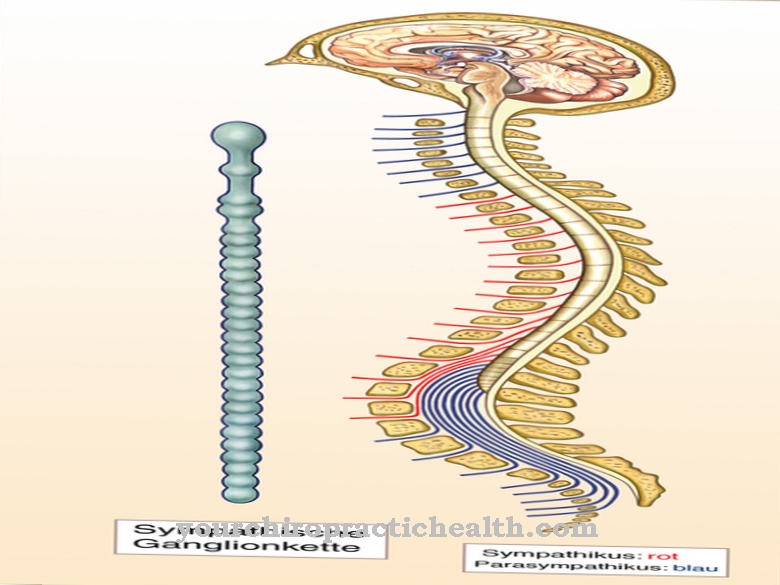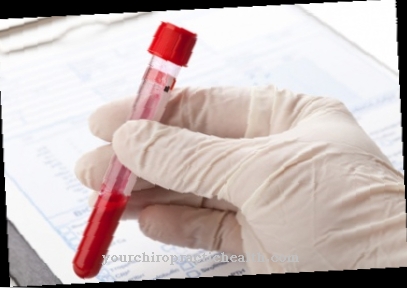The testicular sperm extraction is the collection of sperm by means of a biopsy of the testicles. For men with non-obstructive azoospermia, this reproductive medical procedure is the only option for having a child of their own. The sperm is later injected into female egg cells as part of an ICSI.
What is testicular sperm extraction?

The reproductive medicine specialist understands testicular sperm extraction to be the first step in fertility treatment. The procedure is also short TESE called. As part of this treatment, sperm are removed from the man's testicles, which are used for the artificial fertilization of an egg cell.
The TESE basically corresponds to the extraction of sperm as part of a testicular biopsy. The procedure has been used since 1993 and is usually carried out in combination with a combined fertility treatment. Most often, TESE is followed by ICSI, i.e. an intracytoplasmic sperm injection.
In this method, the man's sperm cells are injected directly into an egg cell. So-called reproductive medicine, which has been established as a separate medical discipline since the 20th century, is responsible for all treatments relevant to reproduction. The goal of most reproductive medicine treatments is to restore fertility and thus to fulfill a previously unfulfilled desire to have children.
Function, effect & goals
TESE is primarily aimed at sterile men with azoospermia. With this phenomenon there are no sperm cells in the ejaculate. The man cannot fertilize his wife's egg naturally. The TESE makes fertilization possible and thus fulfills a couple's desire to have children despite azoospermia. In around 15 percent of all childless couples, azoospermia is responsible for the unfulfilled desire to have children.
Accordingly, TESE takes place frequently in reproductive medicine. The doctor differentiates between two different forms of azoospermia: an obstructive and a non-obstructive type. In the obstructive form, a blockage in the seminal duct prevents sperm cells from penetrating into the ejaculate. However, since this form of azoospermia mostly goes back to a vasectomy, reproductive medicine treats those affected with re-fertility surgery rather than TESE. Non-obstructive azoospermia, on the other hand, is a disruption of sperm production. With this phenomenon, sperm cells are often present directly in the testicles, but they cannot penetrate the ejaculate due to their poor density or restricted mobility.
For men with non-obstructive azoospermia, TESE is accordingly the only sensible reproductive medicine treatment. As a rule, the TESE takes place on an outpatient basis and takes place either under partial or general anesthesia. The general psychological state of the patient and the findings determine the form of anesthesia in each individual case. The biopsy can be done on one or both sides. The findings also decide on this in individual cases. As part of the TESE, the reproductive medicine specialist exposes the testicles through a small incision in the scrotum. The scrotum and its conduction pathways are then inspected before the surgeon cuts the testicle capsule. After taking a tiny sample of tissue, the team examines that tissue for sperm.
The further procedure is decided based on the findings. If there is enough sperm, part of the tissue sample is frozen. Also known as cryopreservation, this step keeps the sperm alive until they can be injected into an egg as part of an ICSI. As a rule, the doctor then sutures the incisions with a self-dissolving thread.
Risks, side effects & dangers
The tissue sample taken during a TESE is relatively small. The risk of permanent impairment for the patient is accordingly low. After about two weeks, the surgical area has healed completely. Showering is allowed again just two days after the operation. After about ten days, the patient can bathe again or visit the sauna.
However, tight clothing should not be worn until the biopsy area has completely healed. Heavy physical work and sport are not allowed for around three weeks. The patient should also refrain from sexual activity for about a month. Office work, on the other hand, can be resumed three days after the operation. Since TESE uses self-dissolving threads for the seam, no threads have to be pulled. The risk of complications with this operation is extremely low. In rare cases, infections or bleeding occur. Sometimes a bruise occurs on the scrotum, but this soon disappears on its own.
You may experience slight pain or pulling in the area of the sutures, but they usually don't last long. The general risk of the operation is estimated to be low. Egg cells are removed from the woman at about the same time as the TESE. These egg cells are fertilized with the removed sperm by injection. The restricted density or flow rate of the sperm is irrelevant for this method. Later on, around three of the fertilized egg cells are reinserted into the woman.
Despite or in this case thanks to artificial insemination, the woman experiences a pregnancy. However, reproductive medicine cannot guarantee that its methods will work. If reproductive medicine treatment runs smoothly, it often has a negative impact on the patient's psyche. Some couples even split up after unsuccessful treatment.













.jpg)

.jpg)
.jpg)











.jpg)